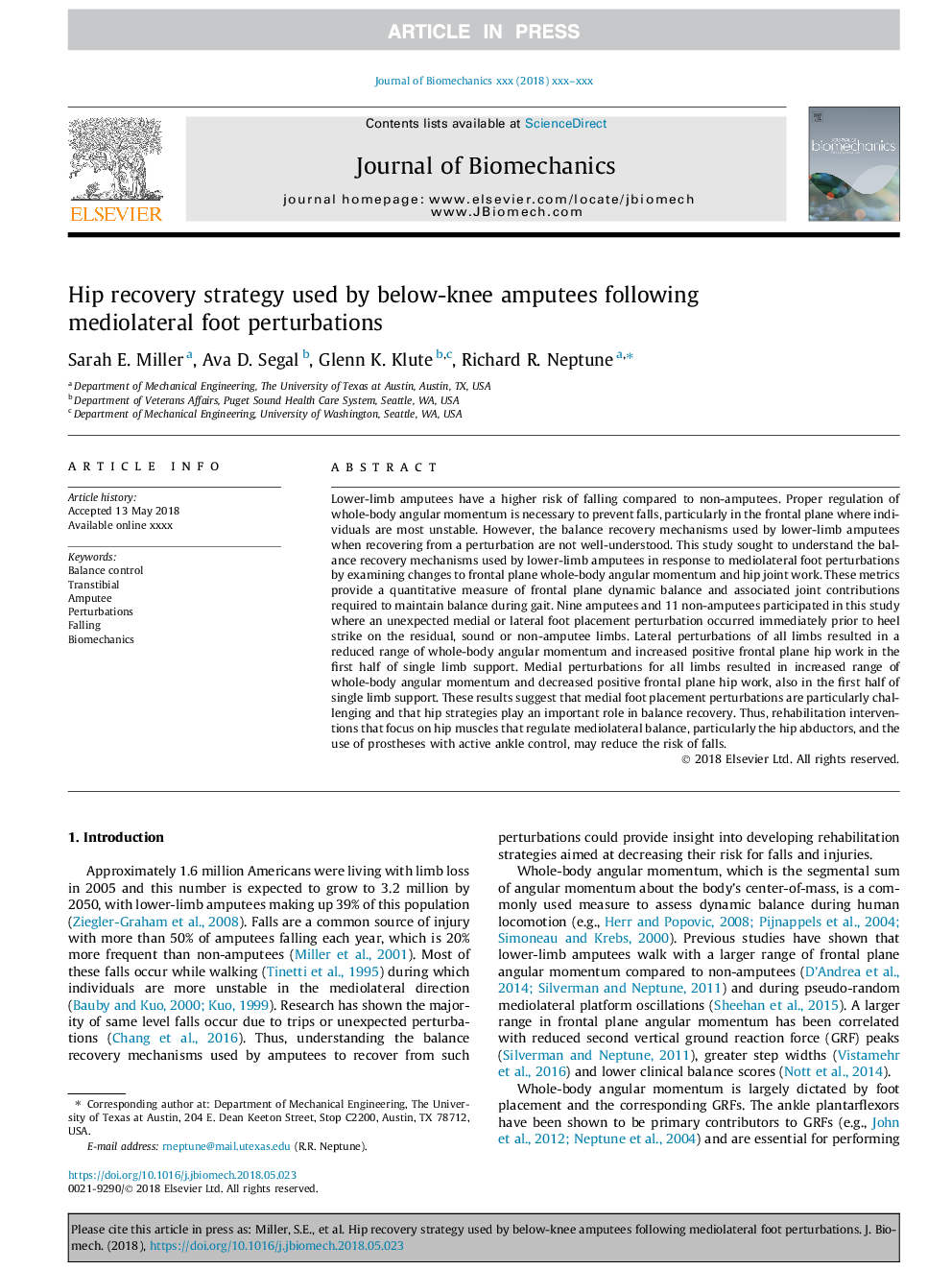| Article ID | Journal | Published Year | Pages | File Type |
|---|---|---|---|---|
| 7235726 | Journal of Biomechanics | 2018 | 7 Pages |
Abstract
Lower-limb amputees have a higher risk of falling compared to non-amputees. Proper regulation of whole-body angular momentum is necessary to prevent falls, particularly in the frontal plane where individuals are most unstable. However, the balance recovery mechanisms used by lower-limb amputees when recovering from a perturbation are not well-understood. This study sought to understand the balance recovery mechanisms used by lower-limb amputees in response to mediolateral foot perturbations by examining changes to frontal plane whole-body angular momentum and hip joint work. These metrics provide a quantitative measure of frontal plane dynamic balance and associated joint contributions required to maintain balance during gait. Nine amputees and 11 non-amputees participated in this study where an unexpected medial or lateral foot placement perturbation occurred immediately prior to heel strike on the residual, sound or non-amputee limbs. Lateral perturbations of all limbs resulted in a reduced range of whole-body angular momentum and increased positive frontal plane hip work in the first half of single limb support. Medial perturbations for all limbs resulted in increased range of whole-body angular momentum and decreased positive frontal plane hip work, also in the first half of single limb support. These results suggest that medial foot placement perturbations are particularly challenging and that hip strategies play an important role in balance recovery. Thus, rehabilitation interventions that focus on hip muscles that regulate mediolateral balance, particularly the hip abductors, and the use of prostheses with active ankle control, may reduce the risk of falls.
Related Topics
Physical Sciences and Engineering
Engineering
Biomedical Engineering
Authors
Sarah E. Miller, Ava D. Segal, Glenn K. Klute, Richard R. Neptune,
